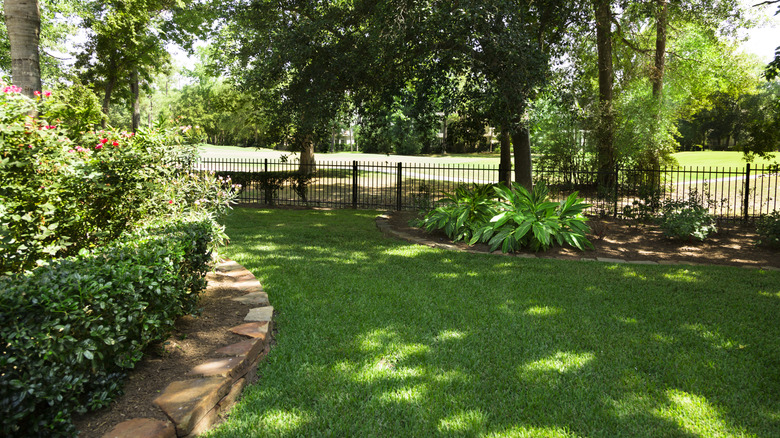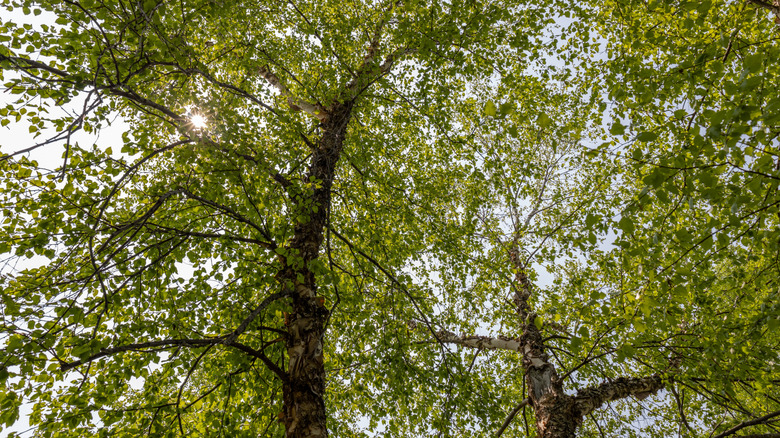The Gorgeous Sun-Loving Tree That Grows Quickly & Adds Shade To Your Landscape
We may receive a commission on purchases made from links.
While it can be nice to have a bright, sunny yard, it's important to have shady areas where you can rest and relax out of the heat. Unfortunately, it can be difficult to introduce shade to an area. While you can install shade sails or use contemporary pergola ideas to provide your yard with the shadows you desire, trees are a better long-term option. However, many trees tend to grow slowly and won't help if you need shade sooner rather than later.
Fortunately, there are some fast-growing shade trees that you can grow as opposed to slower-growing varieties. These can provide you with the shade you need in a fairly short time frame. The river birch (Betula nigra) is one tree that loves sun and grows quickly, at a rate of about 1 ½ to 3 feet per year. Once it's fully grown, a river birch tree will be 60 to 80 feet tall and span close to 40 feet which can provide your yard with plenty of shade.
To grow a river birch tree and benefit from the shade it can offer your yard, give it the right conditions to provide what it needs. A river birch will grow best in USDA hardiness zones 4 through 9. It loves sun and is happy to soak it in on your behalf while you rest comfortably in the shade underneath. Keep it in full sun or partial shade for best results. Its foliage colors look best with a lot of sun exposure. River birch trees tolerate many soil types including clay, loam, and sand. However, the tree likes moist soil, so water it on a regular basis. Shoot for deep watering once per week.
Avoiding problems when growing a river birch tree
While growing this tree is fairly easy and straightforward, there are some things to be aware of before you add it to your yard. Like other trees, the river birch can experience certain types of disease. It can get root rot due to armillaria fungus and this can lead to branch damage, inner tissue damage, and damage to the roots and lower trunk. A fungal disease known as anthracnose can also cause damage in wet weather conditions. This can lead to black spots on foliage, leaf curling, and more. When grown in alkaline soil, iron chlorosis could also become a problem.
Insect problems can also make an impact on this tree as well. Unlike other birch trees, the river birch is pretty resistant to the bronze birch borer (Agrilus anxious). However, aphids, leaf miners, and birch skeletonizers may also cause some damage. Be sure to take note if you notice damage to the tree and take action to check for pests and eliminate them.
Proper care of a river birch tree includes meeting all of the basic requirements. It's also ideal to do some pruning, if needed, to remove dead branches and allow more sunlight to reach various parts of the tree. Wait until after the growing season to prune, however, since doing it during this time could attract borers. If necessary, you may want to resort to using an insecticide to reduce damage from pests as well.

